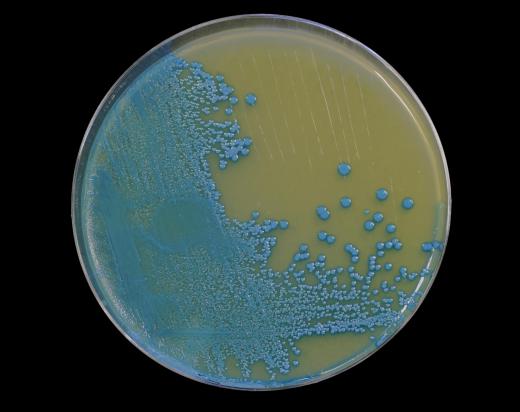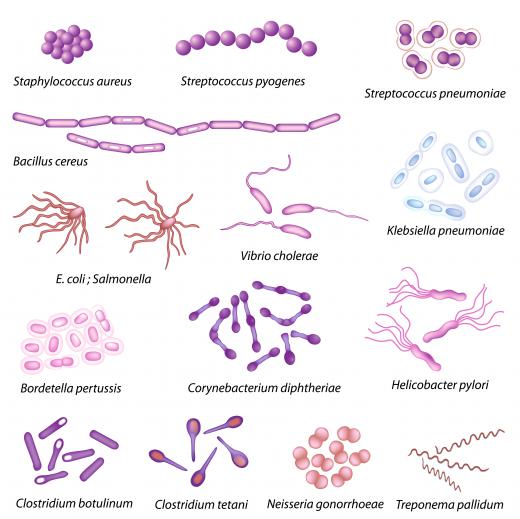What Is Bacteria Classification?
Bacteria classification is the process of distinguishing types of bacteria from one another and grouping them according to shared characteristics. Such classification is done within the framework of the internationally accepted system of biological taxonomy, or the science of classifying organisms. A number of things are taken into account during bacteria classification, particularly RNA sequences, but including shape, biochemistry, and characteristics of the external membrane, among others.
While there are differing views on the way organisms should be classified, the current prevailing system divides all life into three domains. Bacteria form one of these domains. They show an extreme degree of diversity and, by number, make up a large majority of the known species and, by mass, outnumber all multicellular organisms on the earth. Bacteria classification can be difficult due to a number of factors, particularly the absence of complex structures found in more advanced organisms, as well as the tendency of bacteria to transfer segments of DNA.

Bacteriologists use a number of techniques in bacteria classification. Shape is the simplest way to tell bacteria apart, and these organisms can exhibit a variety of shapes including rods, spirals, and spheres, among others. Shape is not necessarily an exclusive characteristic, however, and bacteria that are grouped in widely differing classifications can have similar shapes.

Other morphological features, such as size, can vary significantly from species to species, and typical groupings can also aid in classification. Many species tend to form groups of individual cells, which can vary greatly in number. The presence of external structures, such as tiny tentacle-like constructions called flagella, can also help distinguish bacteria species.

Another key tool in bacteria classification is a test known as the gram stain test, named after a 19th century microbiologist. This test quantifies bacteria according to the thickness of their exterior membrane. Gram negative bacteria have a very thin membrane and gram positive bacteria have a thicker membrane.
Factors such as metabolism and other biochemical distinctions are another tool for bacteria classification. Bacteria metabolize a wide variety of different compounds, and the particular compound or compounds used or converted by a specific bacteria can aid in its identification and classification. Analysis of other biochemical data can also help this process.

Advancements in molecular analysis techniques have made it possible for bacteriologists to differentiate bacteria according to differences in RNA, as well as specific gene sequences. Further analysis of the total amount of individual RNA and DNA proteins and the ratios in which they are present provide another means for classification. Using some or all of these techniques and observable characteristics, bacteriologists are able to classify bacteria according to species and to group similar species together.
AS FEATURED ON:
AS FEATURED ON:














Discussion Comments
@irontoenail - What I find interesting is how much of the identification seems to be a process of elimination. They can't just take a look at a bacteria and say "yes this is a strep bacteria". They have to test it in several different ways to see if it responds in the way that strep bacteria respond.
I guess it makes sense though, since they are so small that it's not like you can examine them closely. If you were trying to identify different kinds of monkeys from the distance of a mile, then you might have to do that based on behavior rather than appearance as well, since they wouldn't be close enough to distinguish more than the most obvious of characteristics.
@Iluviaporos - I can remember learning a bit about this in high school as well, but it probably depends on the teacher and the curriculum. I definitely remember learning about gram stains although I don't know if I could repeat it now.
It was much more interesting than I was expecting it to be anyway.
This seems to be something that you learn over a period of time at university. I was studying ecology, but everyone had to do a little bit of microbiology as well, and I can remember them teaching us the broad categories of different types of bacteria and how they can be identified.
Unfortunately, that information didn't really stick, because it's actually fairly practical knowledge. If you have a rough idea about the different kinds of bacteria and what they do, it's easier to know how to handle different kinds of illness.
Post your comments